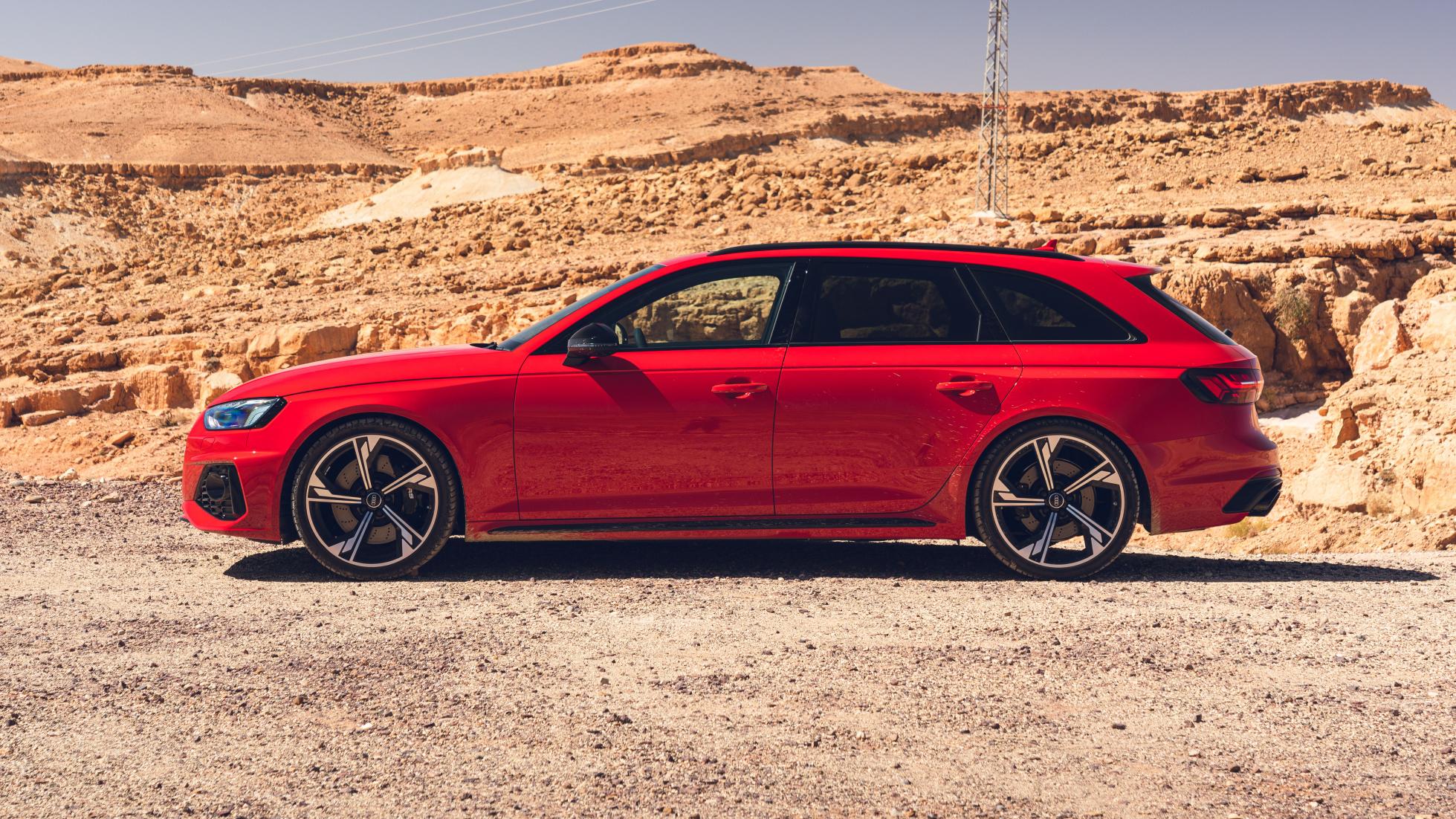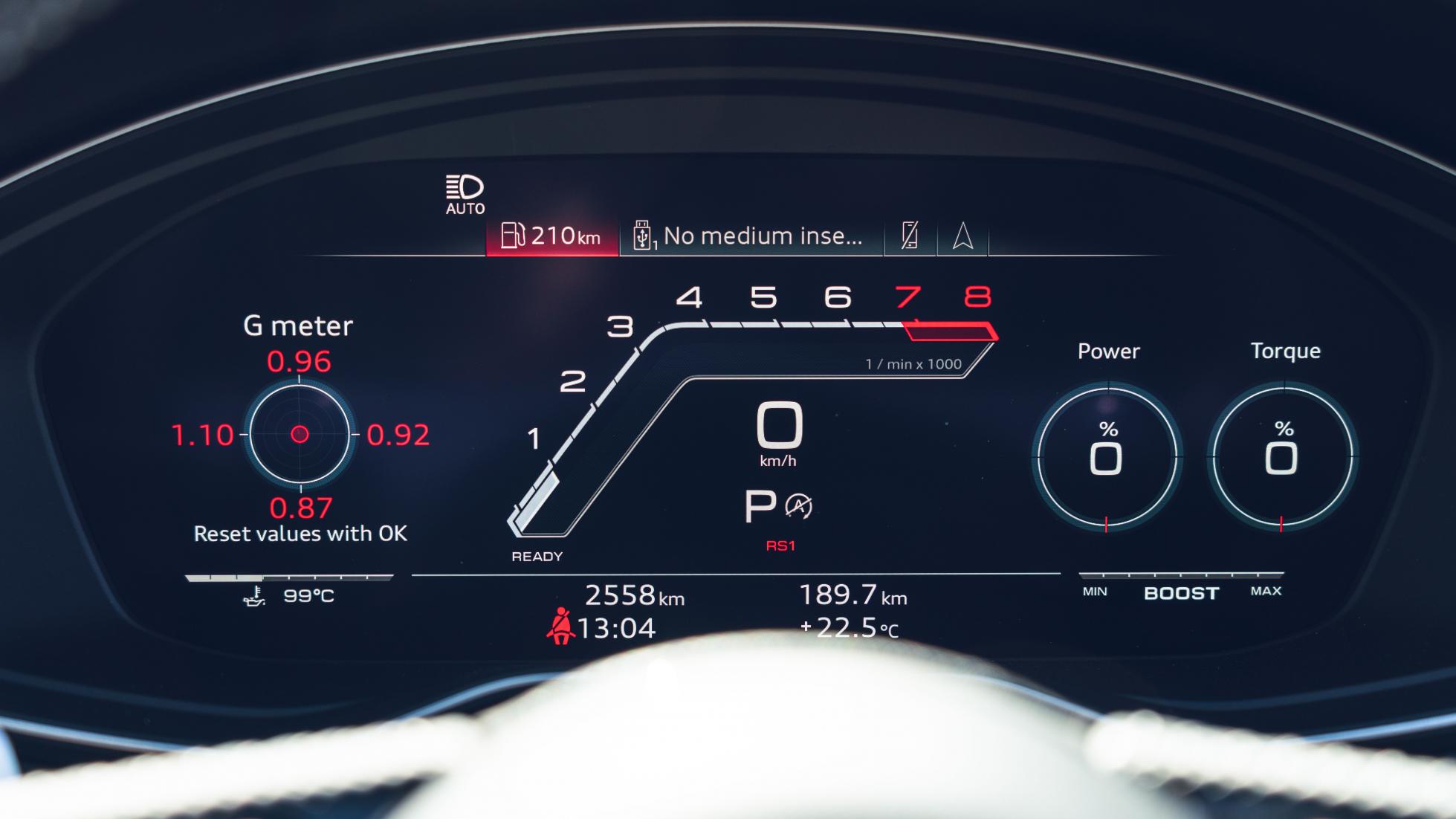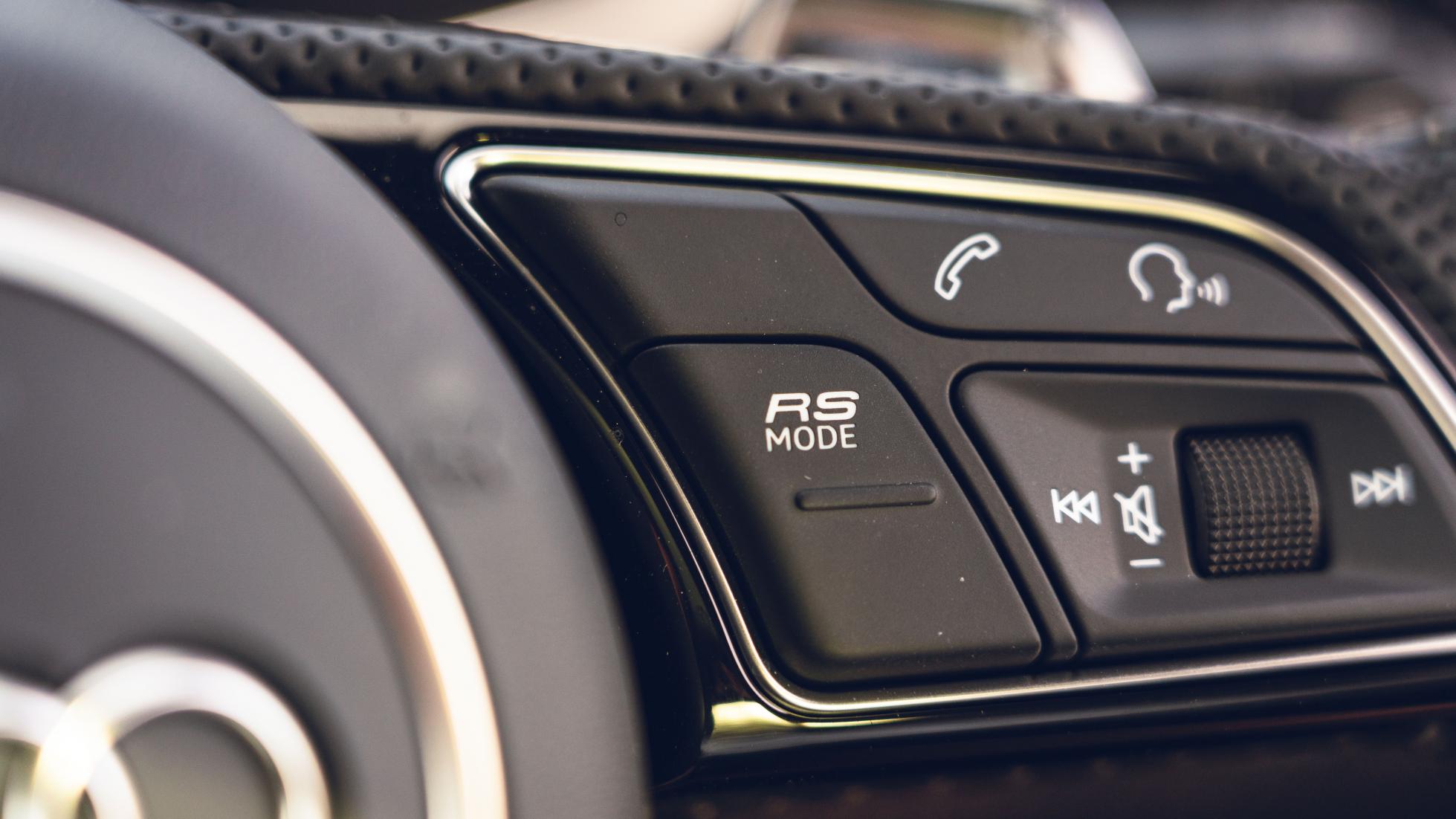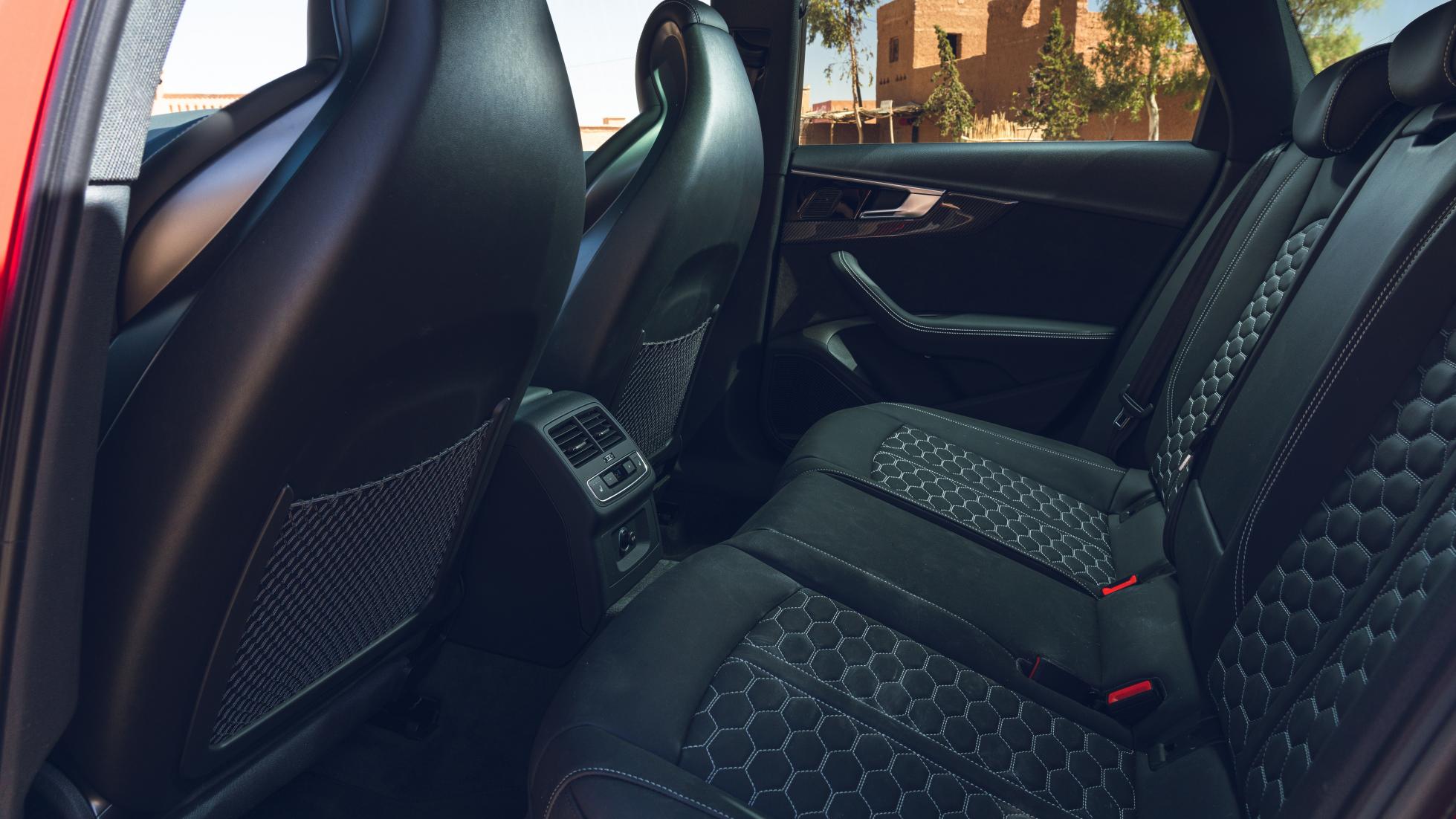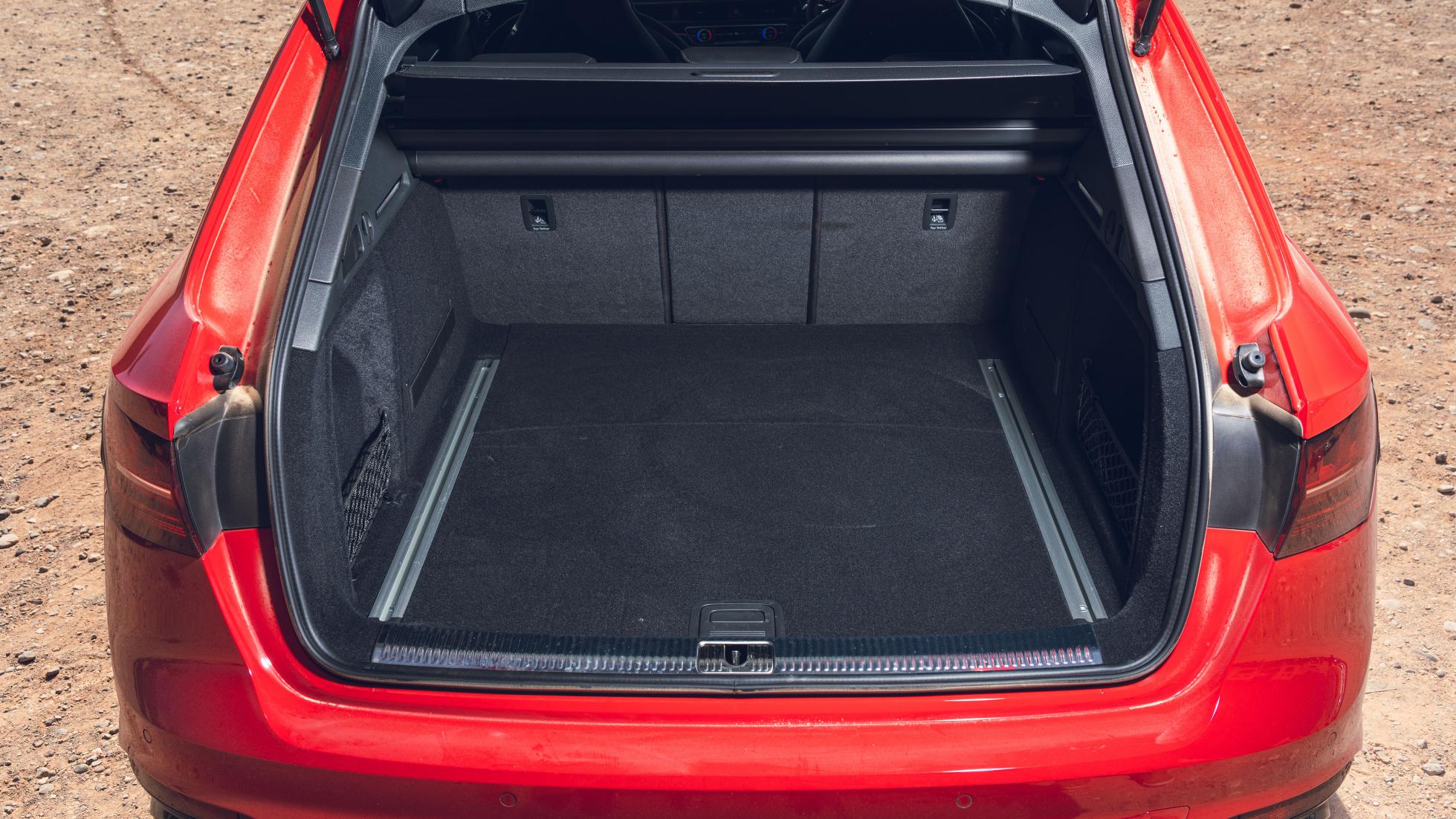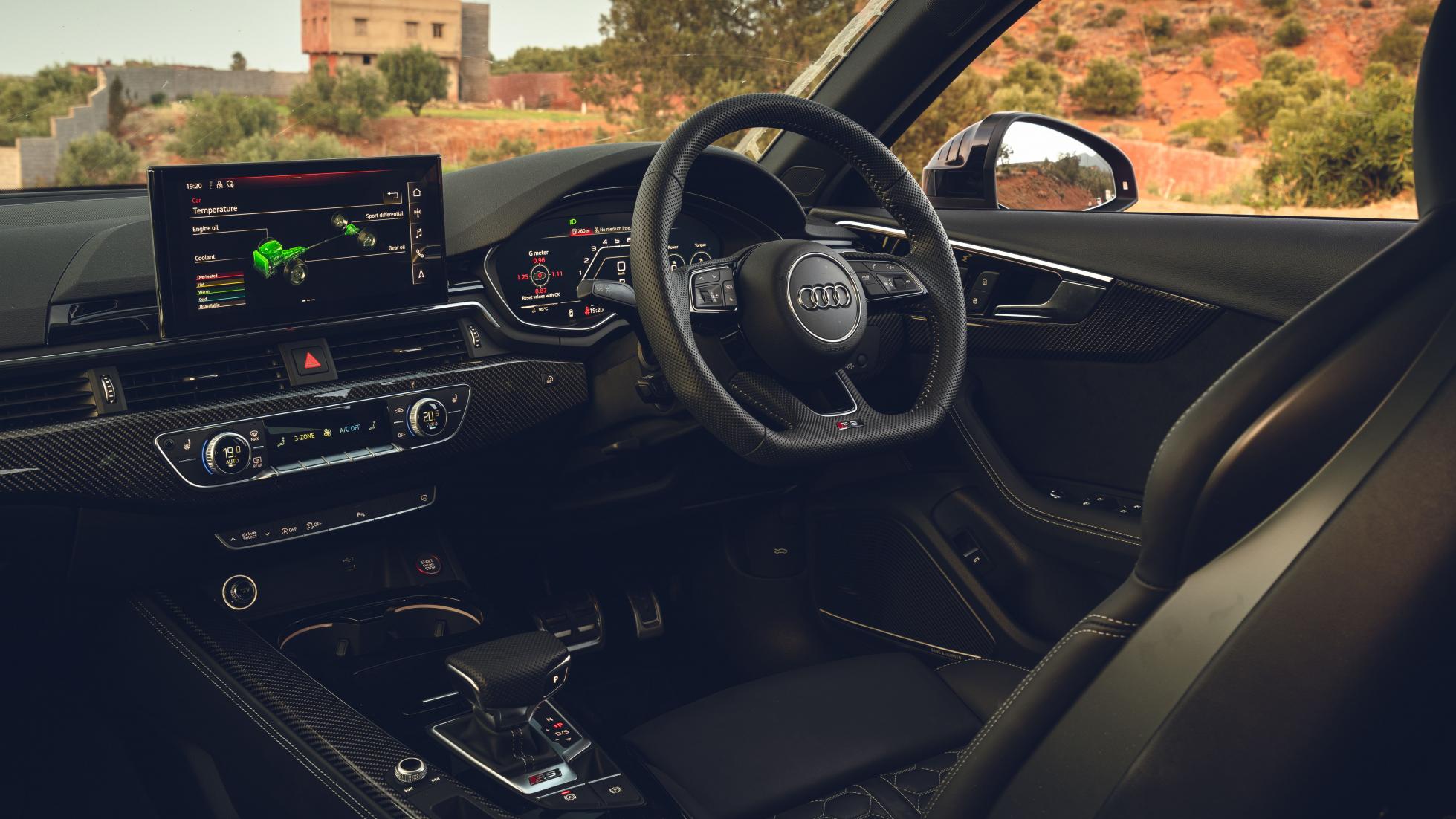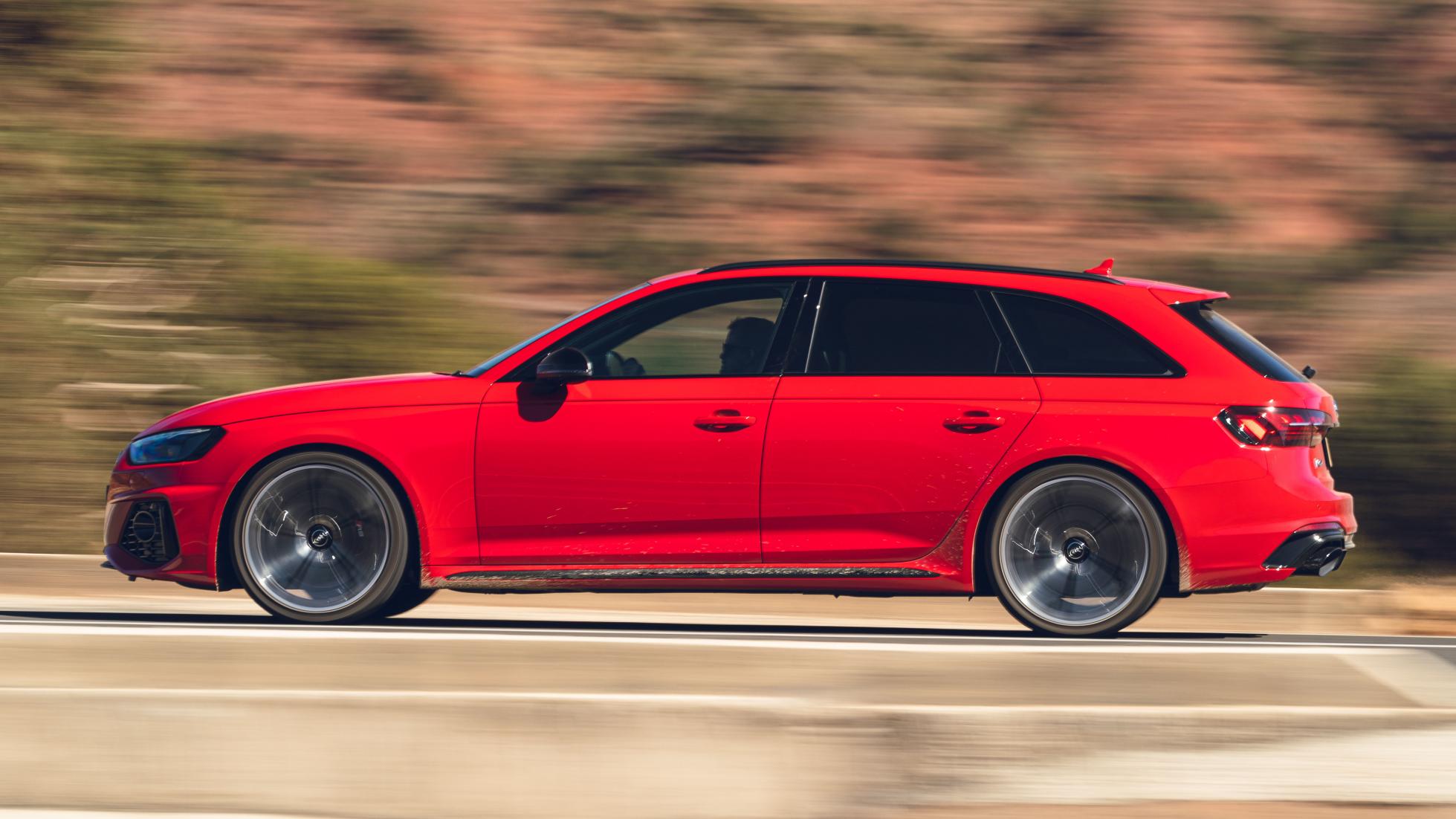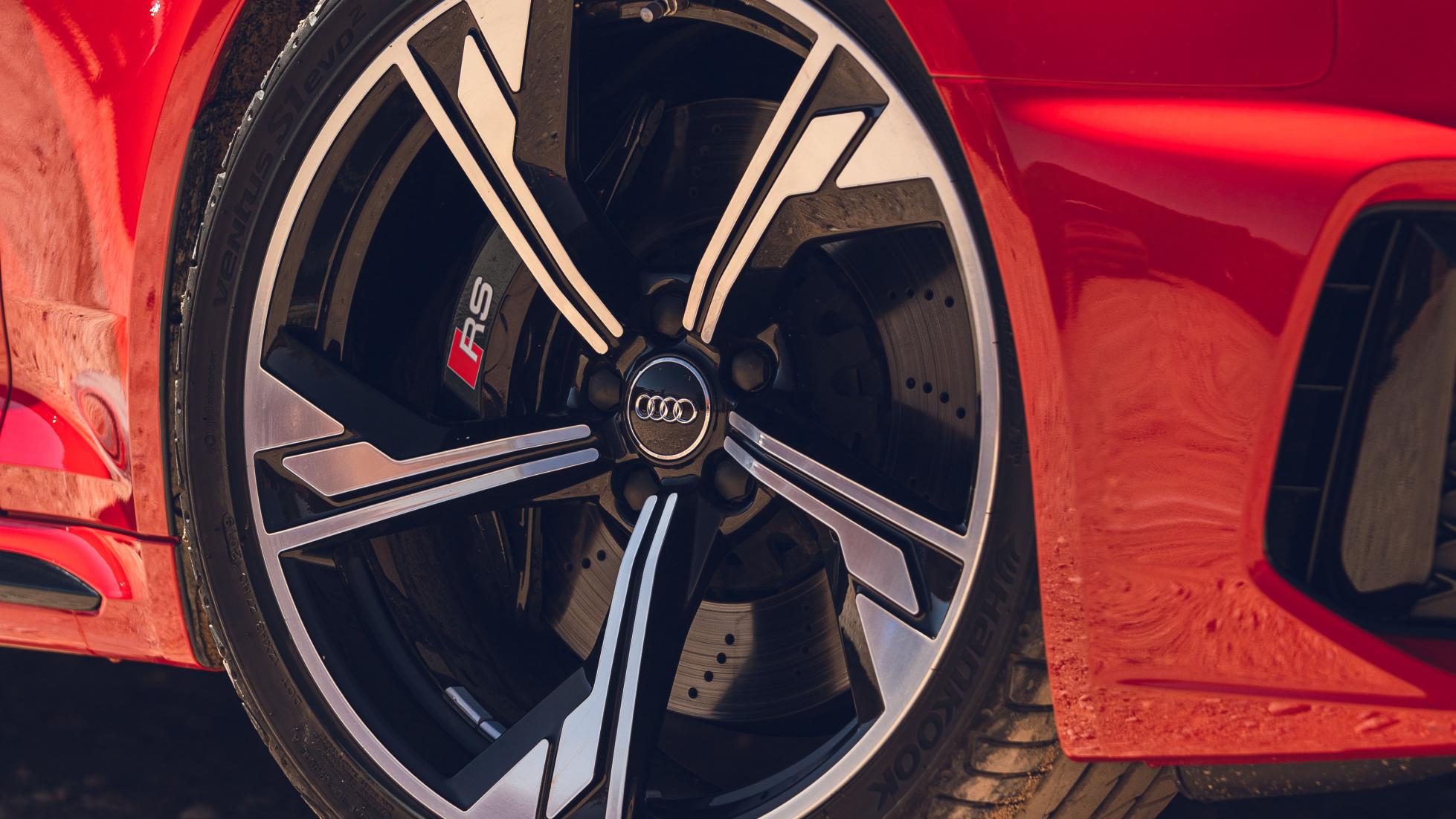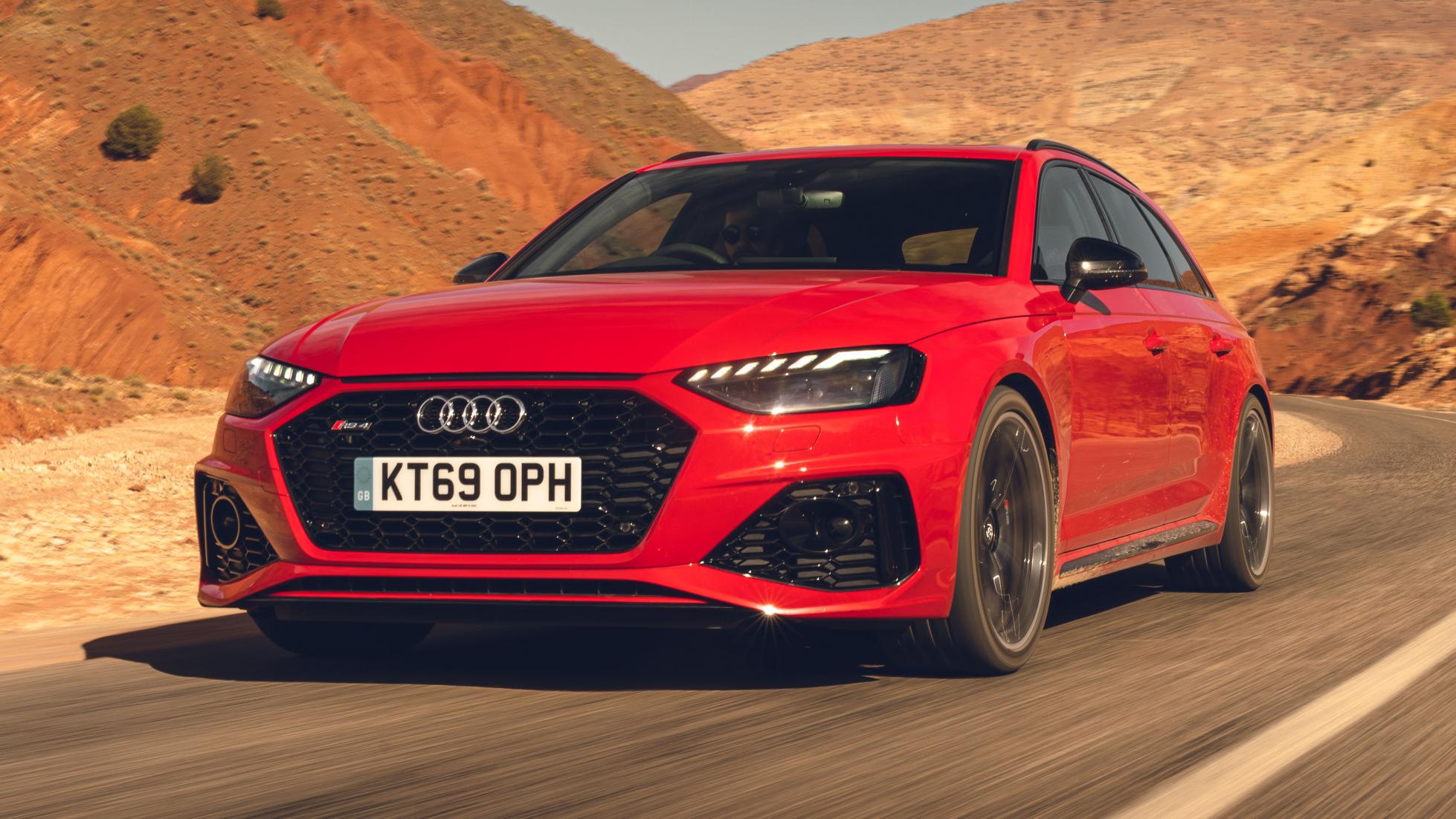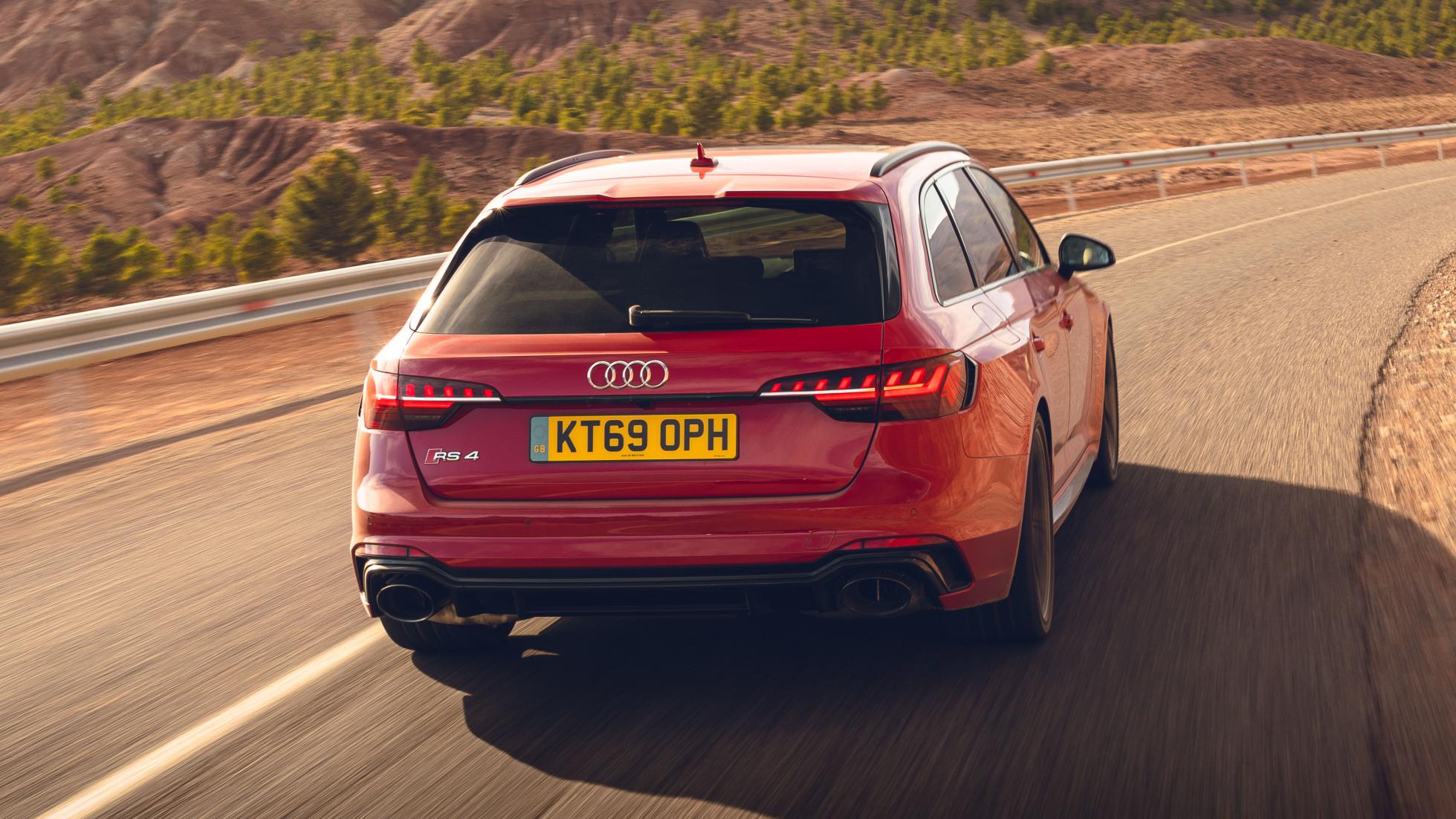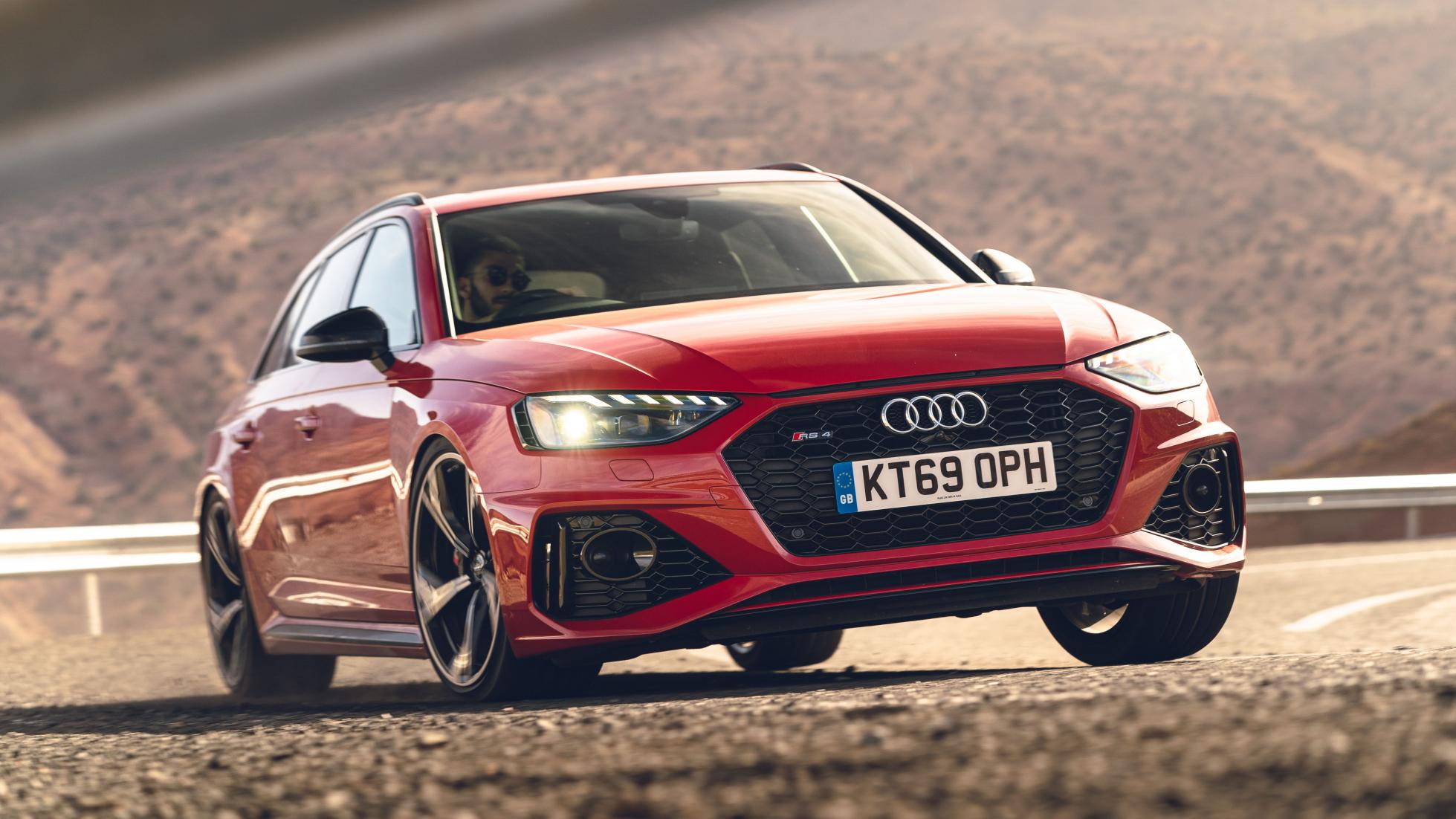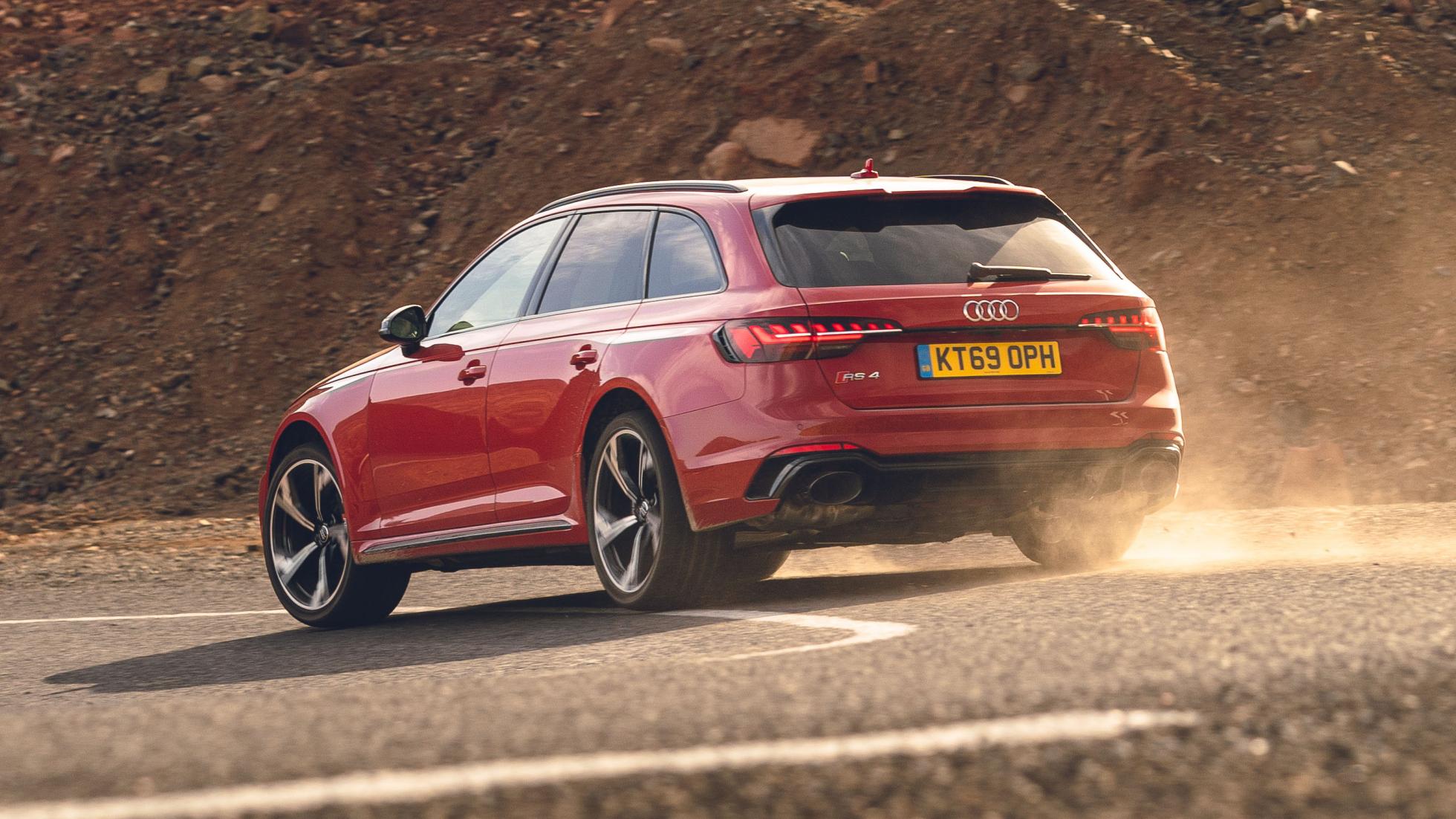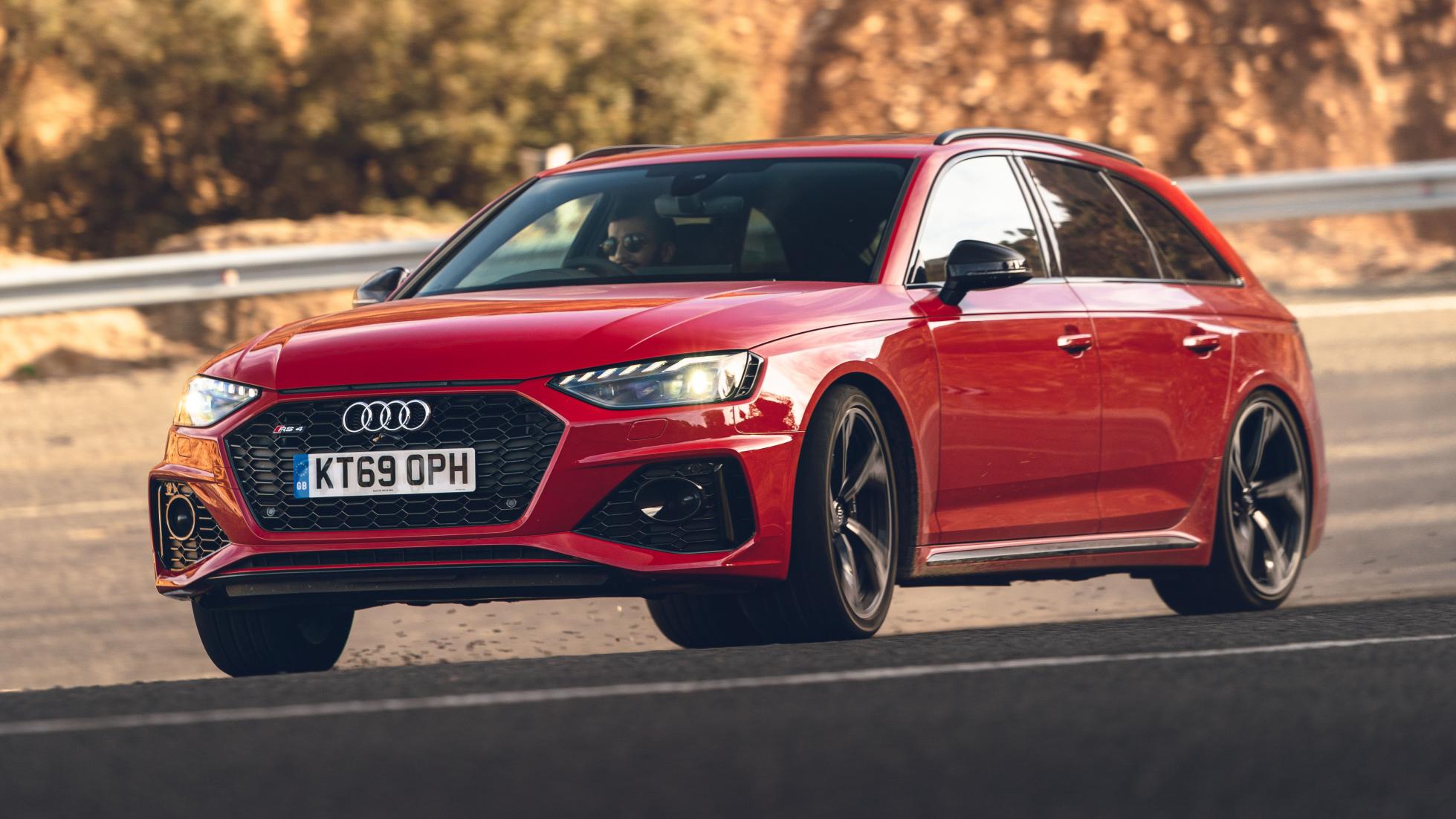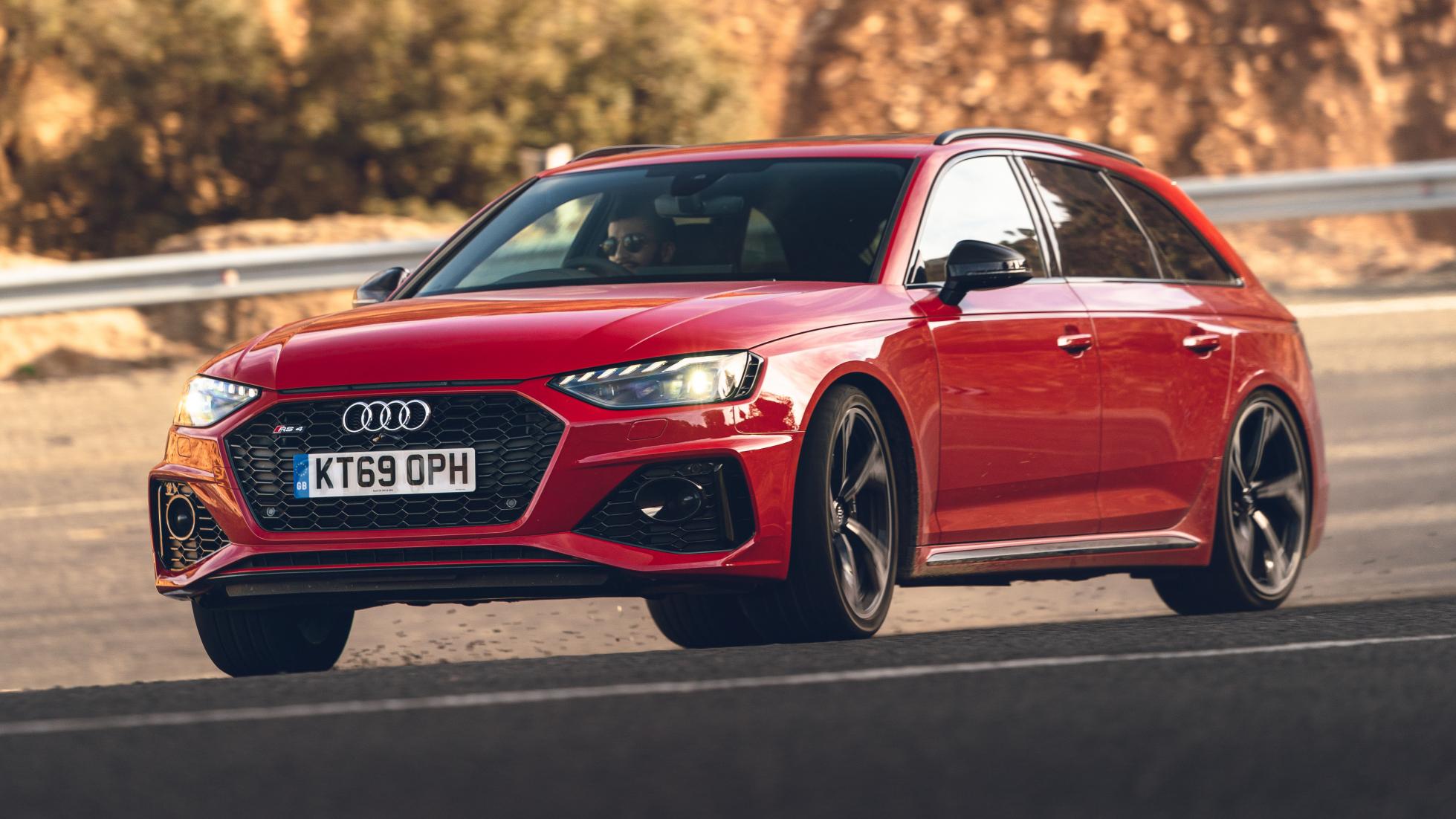
OVERVIEW - What is it?
You need to ask? It’s the fast Audi estate, the spiritual successor to the RS2 that kicked it all off 26 years ago with a car that accelerated to 48kph faster than a McLaren F1. OK, so the RS6 Avant is the horsepower daddy but we’d argue that the smaller and lighter RS4 is more fleet of foot and therefore even more desirable. It’s been around since 1999, when it used a 2.7-litre twin-turbo V6, before going nat asp V8 for a few thunderous golden generations before efficiently downsizing à la mode in B9 form (to use internal Audi code) and running a 2.9-litre biturbo good for 444bhp. That stays for this latest incarnation, a face- (and bottom) lift that eschews power hikes in favour of a judicious mission optimisation. This is all about finessing the chassis and powertrain, to deliver a car that’s more nuanced even if there are still elements of Ingolstadt sledgehammer to its character. Audi highlights weight reduction and improved driving dynamics, which sounds good to us.
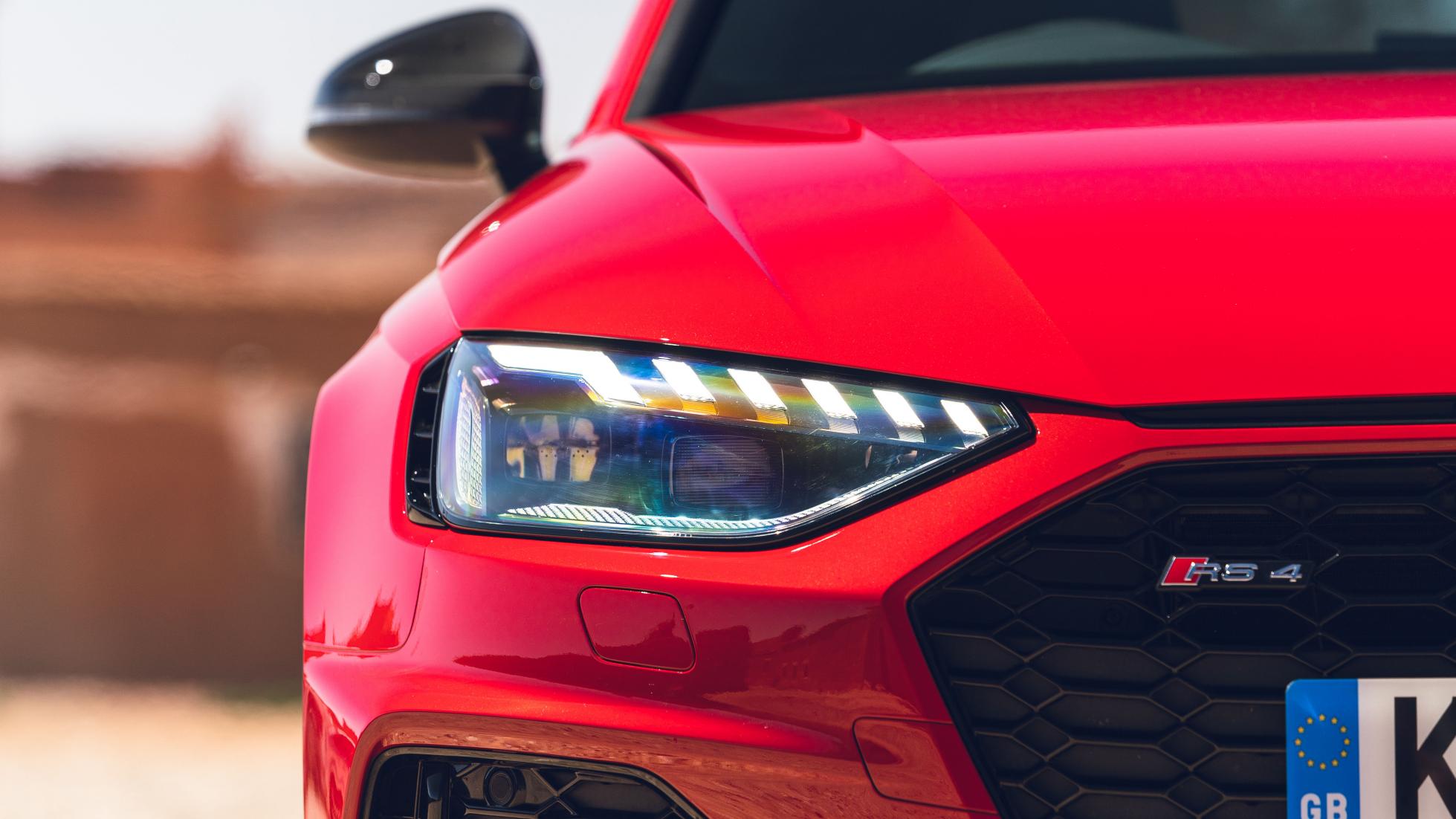
There are visual tweaks, too. Following on from an A4-range wide overhaul, look out for new darkened Matrix LED headlights, which intensify a visage that was hardly lacking in aggression anyway. The single frame grille is wider and flatter, the RS-bespoke front air intakes are bigger than ever, chrome slits bisect the tail-lights, and the whole lot issues a comprehensive rear-view mirror fast lane, erm, ‘flip you’. The ur-Quattro through-line is taken care of via front and rear wheel arch tumescence (30mm wider compared to the stock Avant), and the (cosmetic) air vents on the bonnet’s leading edge.
You’ll search far and wide for a more resolutely planted looking car than this, even on its standard 19in 10-spoke Audi Sport alloys (20in wheels are a £2k option, there are two new designs). Audi claims aesthetic kinship with the fabled Eighties IMSA 90 GTO racer, possibly the most deranged car in its entire back catalogue. Cool.
Elsewhere, the changes are all in the small print. New software promises faster shifts in the eight-speed Tiptronic gearbox, a wider torque curve (599Nm ft between 1,900 and 5,000rpm), and there are quicker reactions and a more rearward bias in the quattro hardware, plus revised software for the passive anti-roll set-up and the adaptive dampers. All the safety, driver assistance and connectivity has been brought right up to date, with an RS-specific Audi Virtual Cockpit (sounds almost quaint now, six years after it first appeared in the TT v3.0), and the latest MMI touchscreen operating system. There’s also an eye-popping range of colours available.
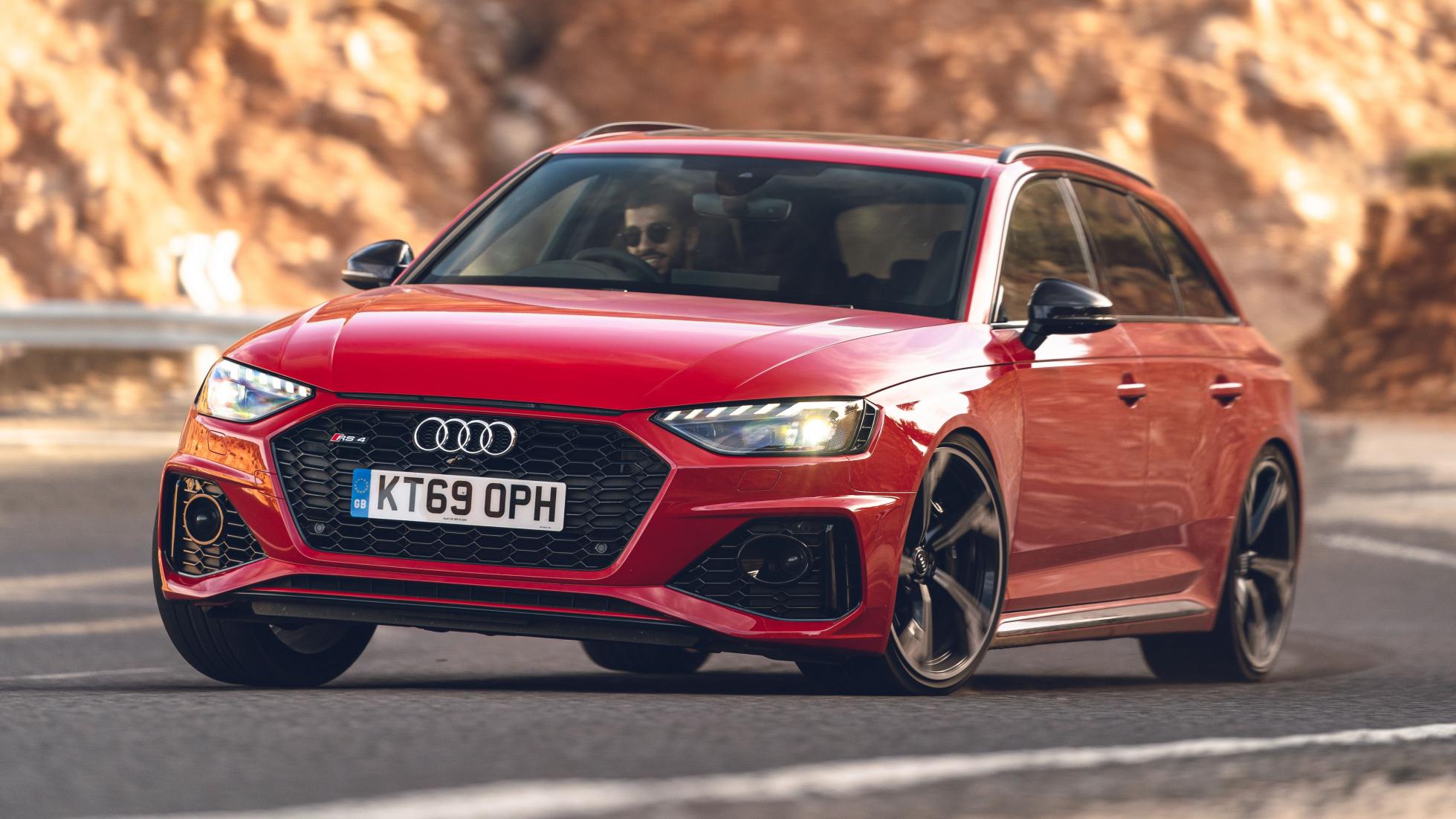
DRIVING - What is it like on the road?
The R8 was probably the first high performance Audi to introduce suppleness to a chassis lexicon in which ride comfort was apparently an alien concept. Since then, the company regularly flies its engineers to the UK during final sign-off, the crucible of distressed bitumen and asphalt. Props to Audi UK’s press operatives for inviting us to try the RS4 on one of the few roads worse than anything we can provide: the ribbon that carves through Morocco’s magnificent Atlas Mountains. Majestically scenic, some of it is actually fabulously well-surfaced, and it’ll be brilliant when it’s finished (sometime in 2120). For now, the problem is that you can go from smoothly grippy stuff to a rutted Paris Dakar-style track in the space of five minutes – sometimes even less, and often with a JCB chomping through the mountain-side for added jeopardy – which is a hell of a way to prove out the RS4’s quattro prowess and multi-link front and rear suspension.
Like the new RS6, though, this thing is a revelation. The RS Sport suspension sits seven millimetres lower than the S4’s set-up, and it’s very well judged. Things get more complicated and even better if you’ve ticked the optional Dynamic Ride Control box. It works in a manner similar to the system in the McLaren 720S, using three-mode dampers that are linked diagonally with hydraulic fluid. As in the latest RS6, this is another highly rapid Audi in which the chassis’ compliance actually trumps its lateral grip in the top 10 of reasons to be impressed by it. Its everyday useability is terrific.
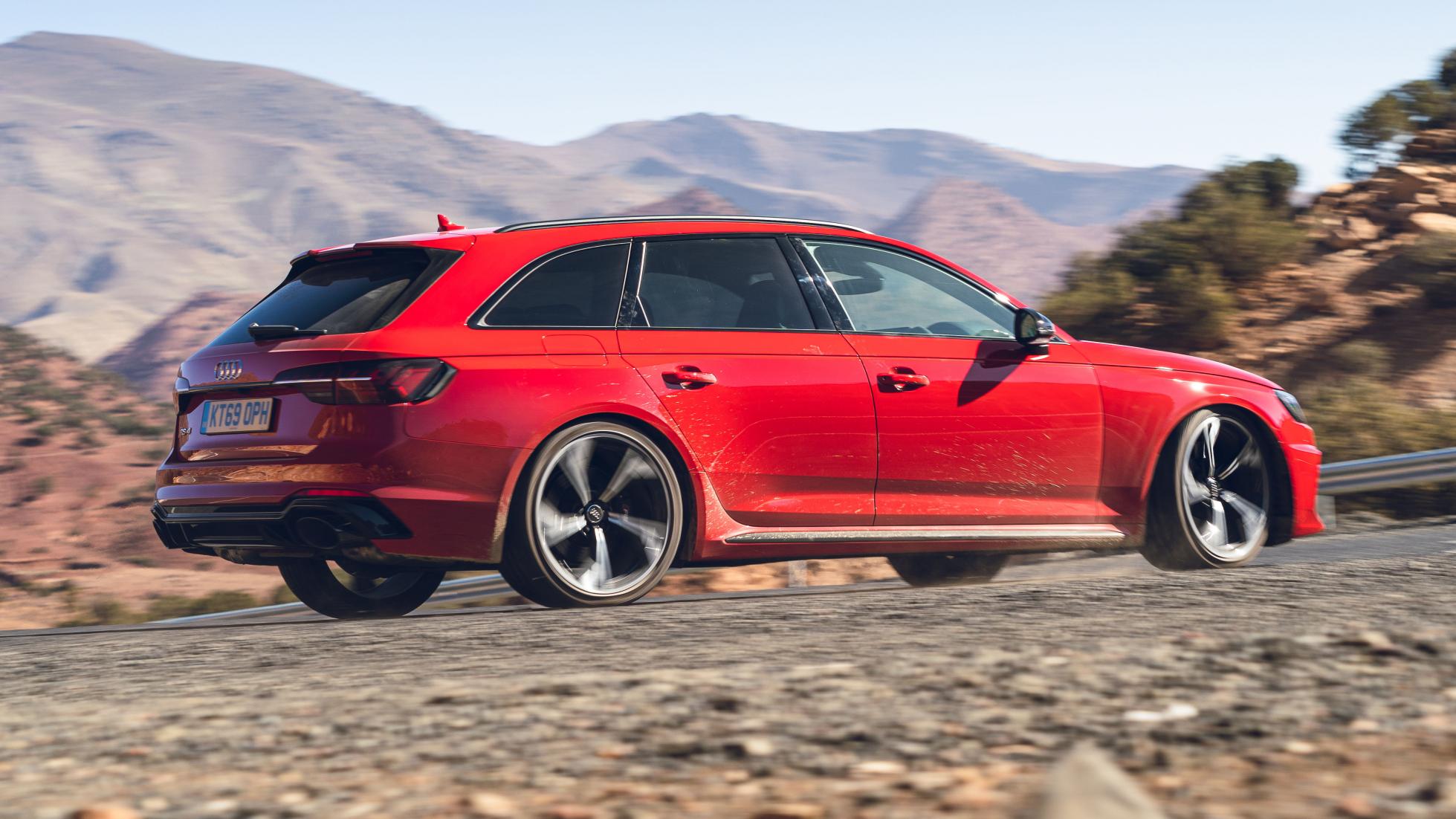
Which isn’t to say that this isn’t a car of considerable dynamic competence. Although it weighs 1,745kg, it warps between apexes with palpable conviction and doesn’t fall over itself when it gets to them (it’s worth noting that the 2.9-litre TFSI engine only weighs 182kg). Steering feel is probably one of its weaker points, but its front end poise is terrific, and an electronically controlled rear differential means the back end obediently follows suit (RS-only variable ratio dynamic steering is an option). It’s meticulous and precise, its quattro AWD meting out torque in a mostly 40:60 front to rear split, with torque vectoring in the mix to further sweeten its cornering chops. Braking is by 375mm front, 330mm rear steel discs as standard, with ceramics as an option (which also save 8kg in unsprung mass – they cost £6,150); the standard set-up isn’t wholly feelsome but is easily good enough. This is a car that is singularly unflappable, as well as more than fast enough for any sane human: 0-100kph in 4.1 seconds, and a top speed of 280kph (with the electronic restrictor removed).
But here’s an old-fashioned thought: does it get the heart pumping? Not in the way a Mercedes-AMG C63 or, if we discount the estate element, an Alfa Romeo Giulia Quadrifoglio does. The RS4’s engine doesn’t ripple with the same frenzied character, although the (optional) sports exhaust ramps up the drama. Audi’s Drive Select offers six different profiles, influencing the engine and transmission, steering, suspension, and the quattro sport differential. Although you can customise the RS1 and 2 modes, it still doesn’t feel like a car in which you’d be inclined to go into ‘hoon’ mode for the sake of it (unlike the C63 or Alfa). And you’ve got to stick the ’box in manual mode to get the best out of it, regardless of the software tweaks. It’s plenty smooth enough left to its own devices, but never quite where I wanted it to be once we got a move on.
ON THE INSIDE - Layout, finish and space
Bar the overstyled door handle area – even that looks like it wants to pull your head off – this is surely one of the finest car interiors in the world. The RS seats are trimmed in Nappa leather, and look great with their contrast honeycomb stitching. The flat-bottomed wheel is typical of the genre in that it positively explodes with functionality, including an RS mode button to programme your preferred drive settings, yet manages to be easy and intuitive in use. Better, certainly, than the over-zealous touchpad Mercedes now favours. The aforementioned 12.3in Virtual Cockpit might be knocking on a bit in tech terms but it’s still impressive; in RS guise it gains some extra displays, including boost pressure, tyre pressures, a ‘hockey stick’ rev counter and a g-meter. A crisp HUD is an option. Also new is the 10.1in central infotainment touchscreen, which works well although the graphics aren’t particularly classy and I’m not sold on the typefaces. Like all premium cars, there’s a lot going on and an equal amount to get your head around. Personally, I reckon we’ve reached and possibly passed peak connectivity. The RS4 hovers somewhere close to overload, but its driving position is bang-on, the seats are great, and the climate control works well. The rest is just gravy, really.
Almost forgot. It’s an estate, with 495 litres of space with the back seats in place, 1,495 litres with them folded.
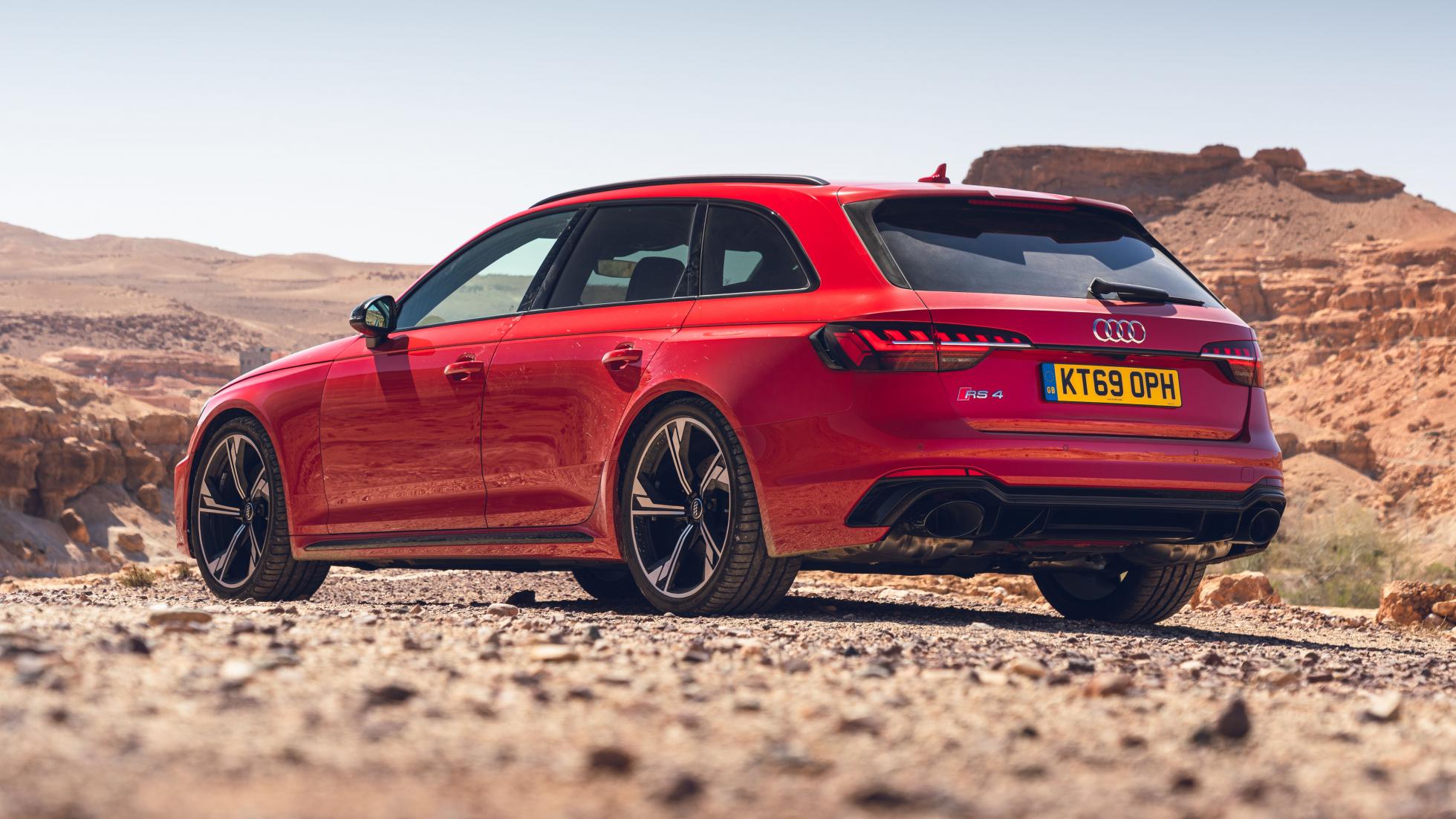
OWNING - Running costs and reliability
The RS4 costs £64,600 before options, and it’s pretty well stocked. But you know the drill with high-end German cars. Level up to the £71,100 Carbon Black edition and amongst other things you gain the eponymous styling package (20in ‘five-arm’ alloys in anthracite black are a £2,375 option on their own, carbon inlays £995). The flagship £82,200 Vorsprung spec adds RS-Sport Suspension Plus with Dynamic Ride Control (definitely worth it – £2,000 on its own), panoramic glass sunroof (£1,600), RS Sport exhaust (£1,250), dynamic steering (less essential), and a Bang & Olufsen 3D sound system (£850). A launch Bronze Edition costs £82,395, and wears striking bronze (yes, indeed) lightweight milled alloys, and a (you might be ahead of us here) bronze styling pack. Only 25 of those are available in the UK.
Audi claims a 9.7 litres/100km WLTP average fuel consumption, and class-leading residuals, retaining 48 per cent of its original OTR price after 36 months or 60,000 miles (versus 35 per cent for the Mercedes C63 S 4Matic). The RS4’s 210 g/km of CO2 gives it a BIK of 37 per cent.
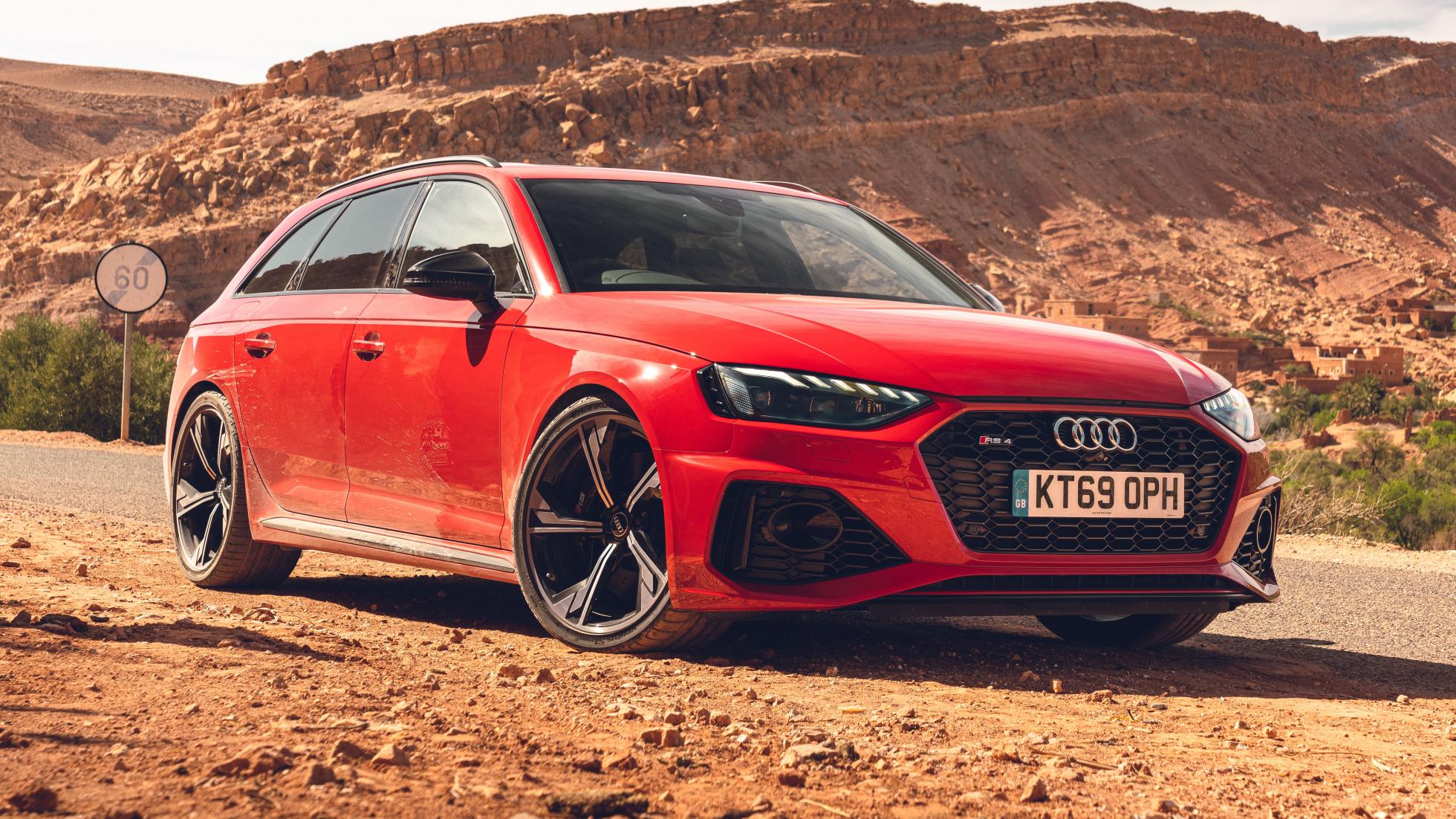
VERDICT
The reworked RS4 shows how committed RS GmbH is to creating cars of real character, as opposed to machines that you simply point down the autobahn. Whatever the weather. The guys running the show over there are young and enthusiastic and their cars have an impressively evolving bandwidth, including considerable potential to entertain.
The RS4 is visually distinctive, impeccably engineered and built, and has the pace and capability to exceed the requirements for any self-respecting real-world supercar. Hard to fault in an objective sense, then. Yet it still feels a bit uptight, and not completely comfortable with the more extrovert aspects of its remit. In that respect, it’s probably tailor-made for its audience.
Words: Jason Barlow
This reworked RS4 shows how committed RS GmbH is to creating cars of real character. A bit uptight, mind
| FOR | AGAINST |
| Looks great, unflappable all-weather pace and performance, impregnable build quality | Thirsty if you up the pace, still feels a little bit aloof |
| SCORE | 8/10 |

